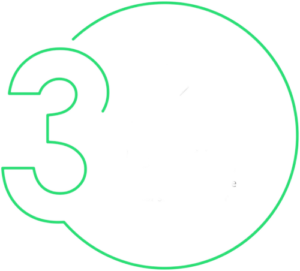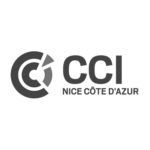The term CATI means “Computer-Assisted Telephone Interview”. This term corresponds to telephone surveys. IntoTheMinds uses the CATI approach only in very specific cases, when the CAWI approach is not possible. We particularly recommend CATI for B2B studies, when our B2B panels are not sufficient to constitute an adequate sample size.
Contact us for your telephone survey projects
CATI: our services at a glance
- Covered territories: Europe
- Languages: French, Dutch, English, German, Spanish, Portuguese, Italian
- Sectors: mainly B2B but can also be applied to B2C in specific cases
- Budget: from 5000€ excluding tax
- Duration of the study: from 3 weeks
- Deliverables: encoded and anonymized data, analysis, presentation of results, recommendations
- Quotes: within 48 hours (immediate approximate budget by contacting us by phone)

Advantages of CATI
CATI has several advantages:
- Respondent profiling: telephone surveys allow you to interview with 100% guarantee the right person. There is therefore no risk of collecting data from a person who was not qualified to respond.
- Length of the interview (LOI): the time spent on the phone allows for substantially longer surveys than in CAWI.
- Type of data collected: in addition to quantitative data, it is also possible to collect qualitative data. Open-ended questions are an ideal means for this.
- Use for commercial prospecting: the telephone survey allows identifying the respondent participating in the survey. Under the guise of collecting his consent, the client can then reconnect for his commercial prospecting.
Disadvantages of CATI
- Sample sizes: telephone surveying is an ungrateful task. Let’s face it. The response rate is low and it takes many calls to get a complete response. However, there are tricks to increase the response rate.
- Budget: the budget for a study using CATI is always higher than if CAWI (online survey) was used. The telephone survey is time-consuming which impacts budgets.
Submit your telephone survey project to us
Setting up a CATI Project at IntoTheMinds
IntoTheMinds follows a rigorous process to ensure the same level of quality for all CATI projects. The projects follow 4 stages:

Kick-Off
The kick-off, or project initiation, allows us to meet the client’s team and review:
- the project’s timing
- the desired information
- definition of targets to be surveyed
- identification of sources to obtain the telephone contacts of targets

Questionnaire Design
Administering a phone survey must be done following a questionnaire. It can be directive or semi-directive, similar to qualitative interviews.
The design of the questionnaire meets the client’s prerogatives. Questions can be closed or open. We always ensure to use formulations that limit bias and to use validated psychometric scales for closed questions.
 Administration
Administration
During administration, the interviewer is assisted by their computer. Questions scroll in front of them allowing for control of time spent and encoding of responses.
A variant consists of automating the administration of questions. A voice synthesis can then be used. This process is common for NPS / satisfaction surveys in B2C. We do not practice it.

Data Analysis and Results Delivery
The last step involves analyzing the encoded responses. We use BI (Business Intelligence) solutions to analyze the data. The obtained visualizations are of higher quality. We mainly use Power BI and Tableau.
The results are delivered to you in the form of a report presented during an interactive workshop of 1 to 2 hours.
Examples of CATI Projects
 Chamber of Commerce and Industry (CCI) of Nice Côte d’Azur: IntoTheMinds conducted a mission for the CCI on the digitalization of training organizations following the COVID crisis. This survey was conducted using a CATI approach.
Chamber of Commerce and Industry (CCI) of Nice Côte d’Azur: IntoTheMinds conducted a mission for the CCI on the digitalization of training organizations following the COVID crisis. This survey was conducted using a CATI approach.
After designing a telephone interview guide with the client, we individually contacted all the training organizations in the region. This allowed us to collect a large amount of data, both quantitative and qualitative.
 MintT.care (Belgium): IntoTheMinds conducted a telephone survey in France for MintT.care among retirement homes. MintT has developed and markets a fall detector for the elderly. The aim of the telephone survey was to collect data on competing systems already installed, the factors of satisfaction and dissatisfaction. After documenting the consent of the respondents, MintT was able to use the established contacts for its commercial prospecting.
MintT.care (Belgium): IntoTheMinds conducted a telephone survey in France for MintT.care among retirement homes. MintT has developed and markets a fall detector for the elderly. The aim of the telephone survey was to collect data on competing systems already installed, the factors of satisfaction and dissatisfaction. After documenting the consent of the respondents, MintT was able to use the established contacts for its commercial prospecting.
Entrust us with your telephone survey projects
GDPR and CATI
The issue of GDPR is much less addressed in the context of CATI than in that of CAWI. However, it remains essential.
We only transmit respondent data if consent has been documented. To prevent abuses calls are recorded. Therefore, consent can be documented without any problem.
How Many Respondents for Your Quantitative Survey?
The last question that needs to be answered about any quantitative survey concerns the number of respondents. To meet statistical requirements, a minimum sample size must be reached.
There are, of course, a few general rules. However, we prefer to give you a comprehensive answer in the form of an interactive calculation module (below). Simply indicate the total population size and desired margin of error, and you will obtain the size of your sample.
 +33 1 88 32 73 44
+33 1 88 32 73 44 +32 2 347 45 86
+32 2 347 45 86
